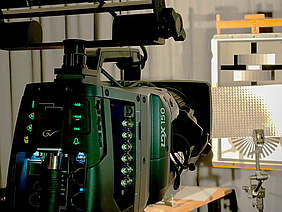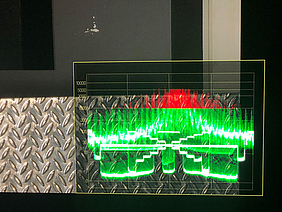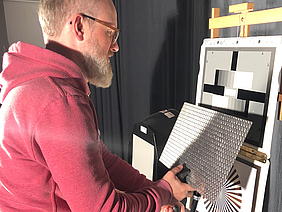Previously the contrast ratio of system cameras, running in PQ, HLG or S-Log3 mode, produced a maximum peak brightness between 1,200 and 1,500 nits.
Therefore the available contrast ratio of PQ with 10,000 nits or S-Log3 with 4,000 nits couldn’t be made use of completely. Additionally the peak luminance of many reference displays is currently limited to 1,000 nits.
Recently, however, cameras and displays have been modified with new technologies and therefore show show better results.
For example, with the new Grass Valley LDX 150, we saw a modern camera that re-interprets the subject of HDR. The camera exclusively produces a UHD/HDR-signal. UHD/SDR or HD/SDR signals can only be obtained via the integrated down mapper. This is definitely a look into the future, showing that in a few years time HDR will become standard.
In our lab we measured the LDX 150 being able to produce signals corresponding to 5,500 Nits, in line with a low signal-to-noise ratio and its nominal light sensitivity. This shows, that it is possible to achieve significantly higher dynamic range when producing with PQ, S-Log3 or HLG 400 (extended range). Please note, this is only one f-stop away from what was previously considered to be an unrealistic value of 10,000 nits for PQ.
The new XM312U reference display from Flanders Scientific goes well with this. It achieves a peak luminance of 5,000 nits and can achieve 2,000 nits over the entire area, twice as much as previous devices. Thanks to the mini-LED background, the black level performance is very convincing, although the display is working with a single LC-system only.
Fact is: Technology will move on! We saw very good results and exciting pictures. HDR with 1.000 Nits is just an intermediate scenario.
You can learn and explore all current developments around HDR at our seminar “Fact Check - The Truth About HDR” in spring 2022. Stay tuned!


